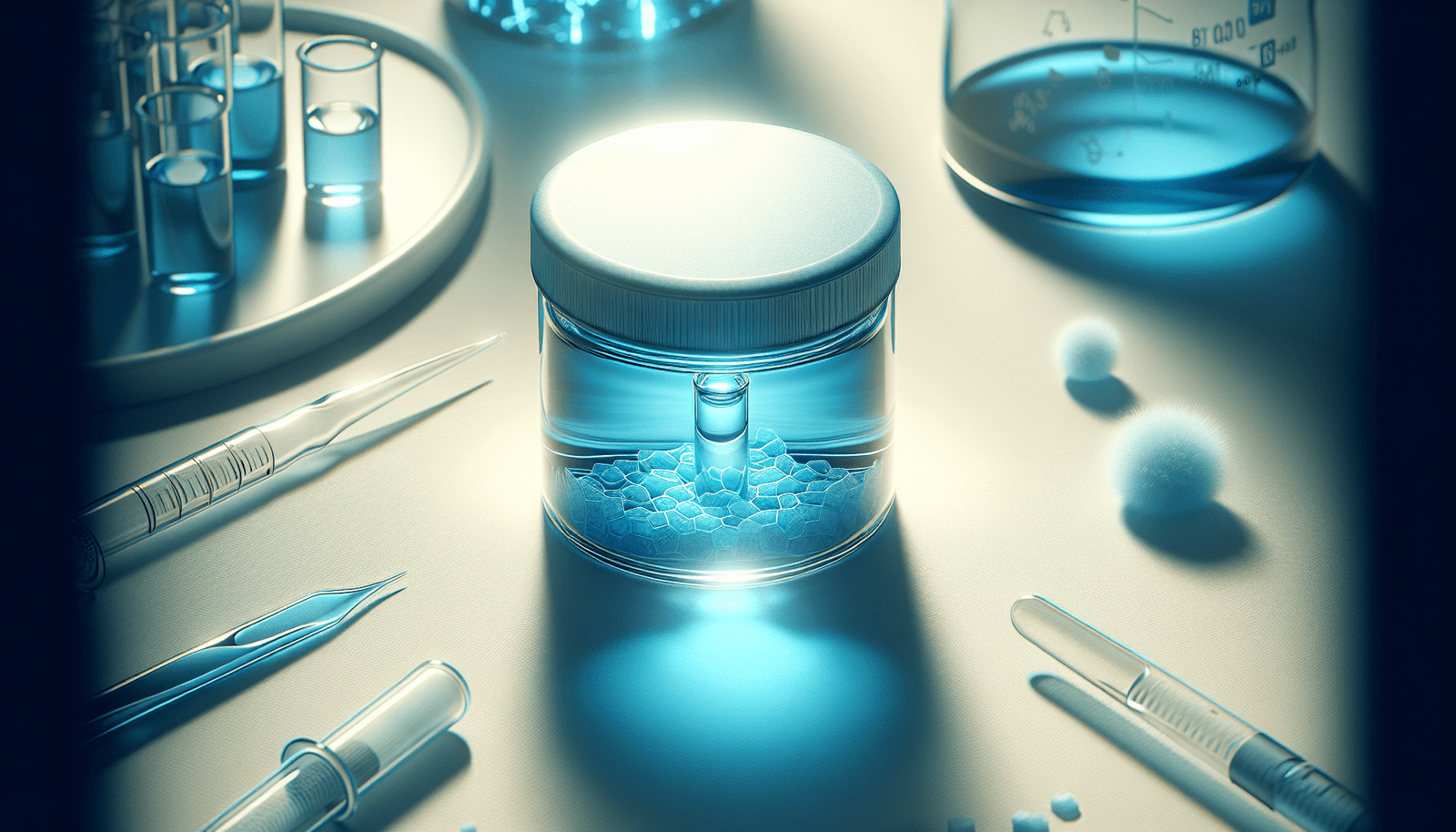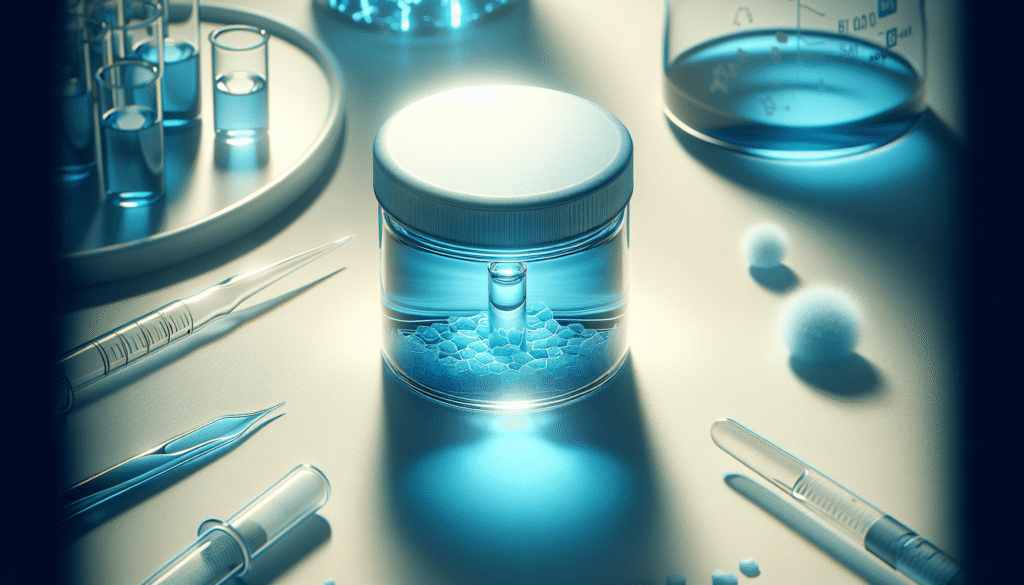
Have you ever wondered about the presence of substances in your body, particularly when it comes to medications like methylene blue? Understanding how long methylene blue lingers in your system can have significant implications for your health, especially if you’re considering its uses, potential side effects, or any necessary medical tests post-administration. This article aims to provide clarity on that very question.

What is Methylene Blue?
Methylene blue, a synthetic dye initially created for textile production, has accumulated a diverse range of applications in the medical field. It has been utilized not only as a dye but also as a medication for various conditions including methemoglobinemia, a blood disorder where hemoglobin is unable to efficiently release oxygen to body tissues.
Your understanding of methylene blue is incomplete without considering its properties. It functions as an antioxidant and has notable effects on cellular respiration. This complex history of application makes it a topic worth examining closely concerning its pharmacokinetics—specifically, how long it remains in your system.
How is Methylene Blue Administered?
Methylene blue can be administered through various routes, including intravenous (IV) injection, oral consumption, and topical application. The method of administration is crucial because it influences how quickly the compound enters your bloodstream and subsequently how long it remains active in your system.
IV Administration
When injected intravenously, methylene blue works almost immediately. With this method, the concentration of the drug in your bloodstream peaks quickly, leading to faster effects but also a more rapid reduction in its presence once the action of the drug wanes.
Oral Administration
If you choose to take methylene blue orally, the onset of effects is slower compared to IV administration. This route often results in a more prolonged presence in your system, which can be useful depending on the medical condition being treated.
Topical Application
Topical applications are less common but do exist, particularly in specialized medical scenarios. The absorption rate can vary significantly based on the area of application and skin condition.
Factors Affecting Duration in Your System
The duration of methylene blue in your system varies based on several factors. Understanding these facets is essential if you are considering this substance for any use.
Dosage
The amount of methylene blue you take plays a critical role in how long it remains in your system. Higher doses result in longer detection times and prolonged effects, while lower doses may leave your system more quickly.
Frequency of Use
If you’ve taken methylene blue multiple times over a short period, your body will accumulate the substance, potentially prolonging its stay in your system compared to a single, isolated dose.
Individual Metabolism
Your metabolic rate significantly influences how long various substances remain in your system. Factors such as age, weight, and overall health can affect how quickly your body processes and eliminates methylene blue.
Health Conditions
Certain health conditions can impact your liver and kidney functions, which are responsible for metabolizing and excreting substances like methylene blue. Impaired functions may extend the drug’s duration in your body.
Other Substances
Medications or substances you currently take can interact with methylene blue. These interactions may inhibit or enhance the drug’s effects, thereby altering its presence in your system.
Understanding Half-Life
A critical concept related to drug duration is the half-life, which refers to the time it takes for half of the drug to be eliminated from your body. For methylene blue, the half-life typically ranges from 5 to 6 hours depending on individual factors. This means that to get a clearer understanding of how long it stays in your system, one must consider multiple half-lives.
Table: Methylene Blue Half-Life
| Dosing Method | Approximate Half-Life |
|---|---|
| IV Administration | 5 to 6 hours |
| Oral Administration | 5 to 8 hours |
As outlined in the table above, the half-life of methylene blue suggests that it could take anywhere from 30 to 36 hours for the substance to be completely cleared from your body after a single dose, depending on individual metabolic rates.

Detection Time
If your concern extends to drug testing or screening, it’s important to discuss how long methylene blue can typically be detected in your system. Though the drug may be eliminated in terms of effects fairly quickly, traces can still appear in urine and potentially blood tests.
Urine Testing
Methylene blue can generally be detected in urine for up to two days following administration. This time frame may vary based on the factors previously discussed.
Blood Testing
In blood tests, methylene blue has a shorter detection window. It may remain detectable for around 24 hours, but this can fluctuate based on dosage and frequency of administration.
Side Effects and Considerations
While understanding the duration of methylene blue in your system is important, knowing the potential side effects is equally essential. The side effects may vary based on the route of administration and your individual factors.
Common Side Effects
Common side effects of methylene blue include:
- Nausea
- Vomiting
- Diarrhea
- Headaches
- Sweating
- Skin discoloration
In many cases, these effects are mild and transient, but they warrant attention, especially if persistent.
Serious Side Effects
In rarer cases, more severe side effects may surface, such as:
- Serotonin syndrome (especially in patients on certain antidepressants)
- Allergic reactions
- Hemolytic anemia
- Tissue necrosis (if injected improperly)
Medical Advice is Essential
Before using methylene blue, it is imperative to consult with healthcare professionals. They can provide personalized insight depending on your medical history and current health, which could prevent adverse reactions or prolonged presence in your system.
Potential Benefits of Methylene Blue
Despite its challenges in terms of duration and side effects, methylene blue also presents possible benefits that may outweigh these drawbacks for specific conditions.
Treatment of Methemoglobinemia
As mentioned earlier, methylene blue is primarily administered to treat methemoglobinemia, enabling hemoglobin to release oxygen more effectively. When used in an emergency, it can be a life-saving intervention.
Cognitive Enhancer
Some studies have suggested that methylene blue may have cognitive-enhancing properties. By promoting mitochondrial function, it may improve memory and cognitive performance, though extensive clinical trials are still necessary for conclusive results.
Antimicrobial Properties
Methylene blue has demonstrated antimicrobial effects, providing potential therapeutic benefits against certain infections. It has shown efficacy against specific bacteria and protozoa, expanding its utility in various clinical settings.
Conclusion
Determining how long methylene blue stays in your system requires a nuanced understanding of various factors, including dosage, frequency of use, and individual metabolism. Generally, expect it to linger in your body from a couple of hours to a couple of days, with detection times varying by testing method.
Your exploration of this topic should be paired with medical guidance, especially if considering methylene blue for health-related purposes. Always prioritize thorough consultation with healthcare professionals who can offer tailored support based on your unique circumstances. Ultimately, understanding the pharmacokinetics of methylene blue is essential for informed decision-making and safe use of this compound.